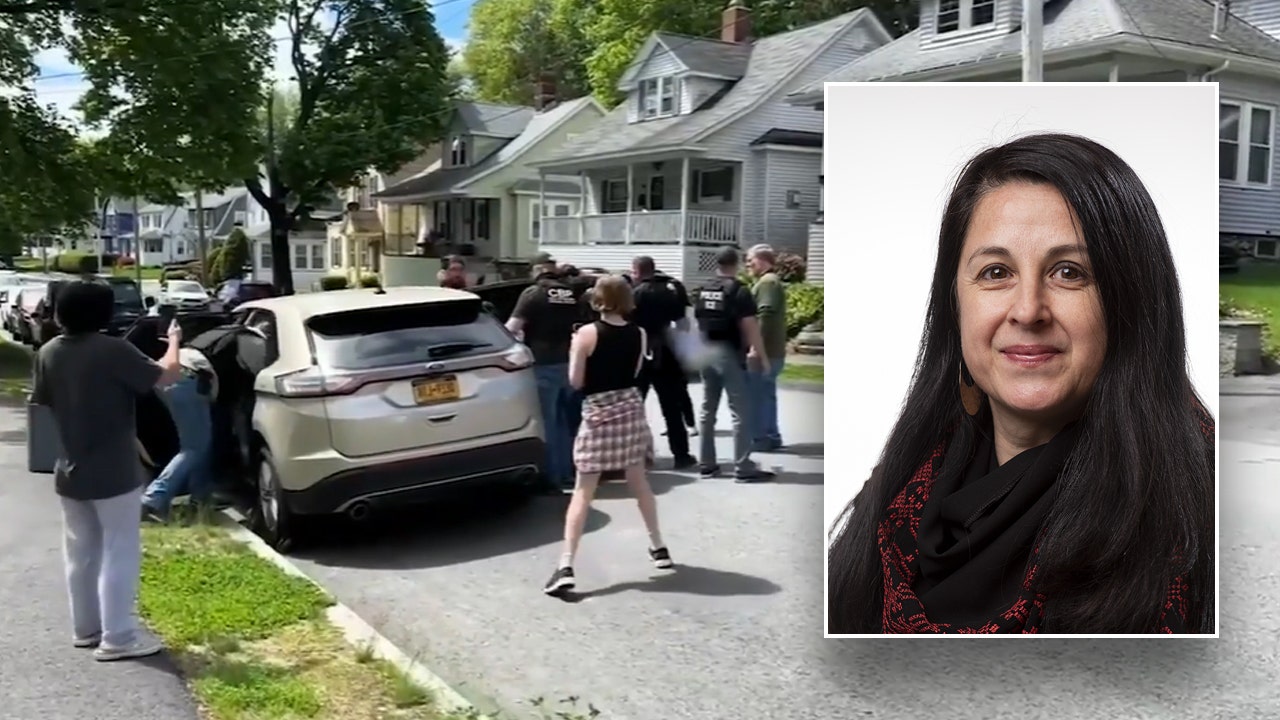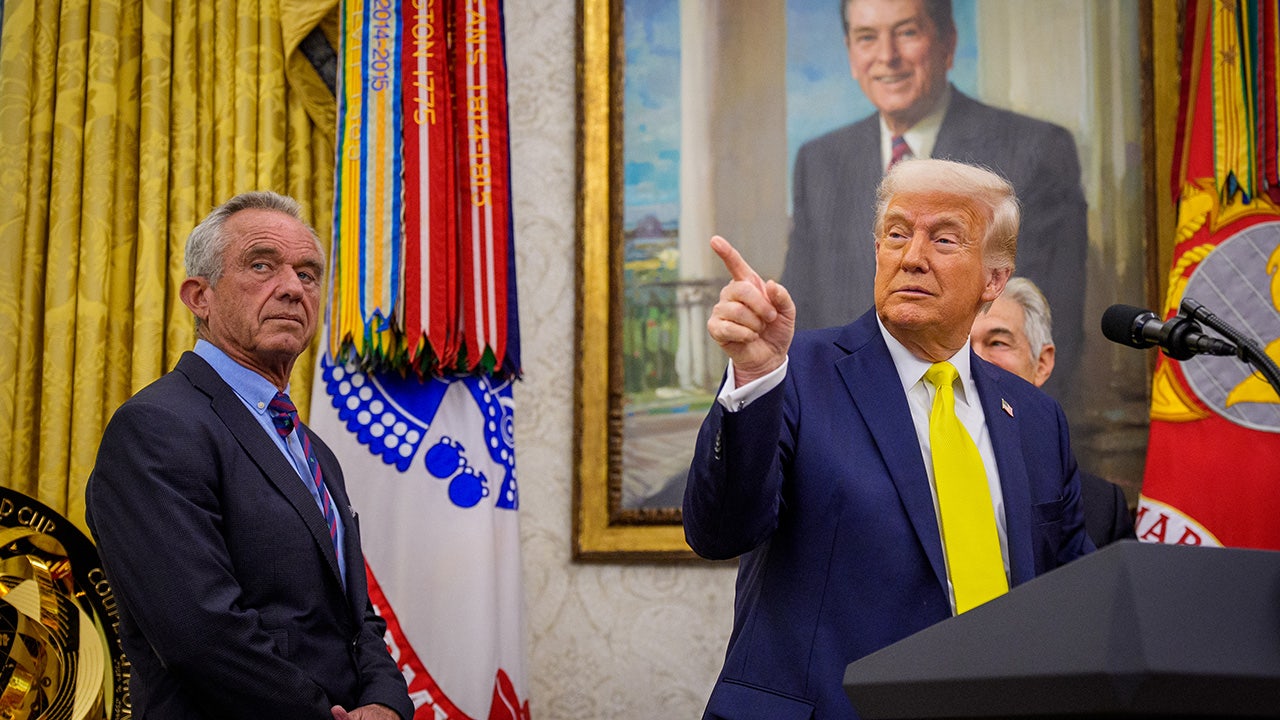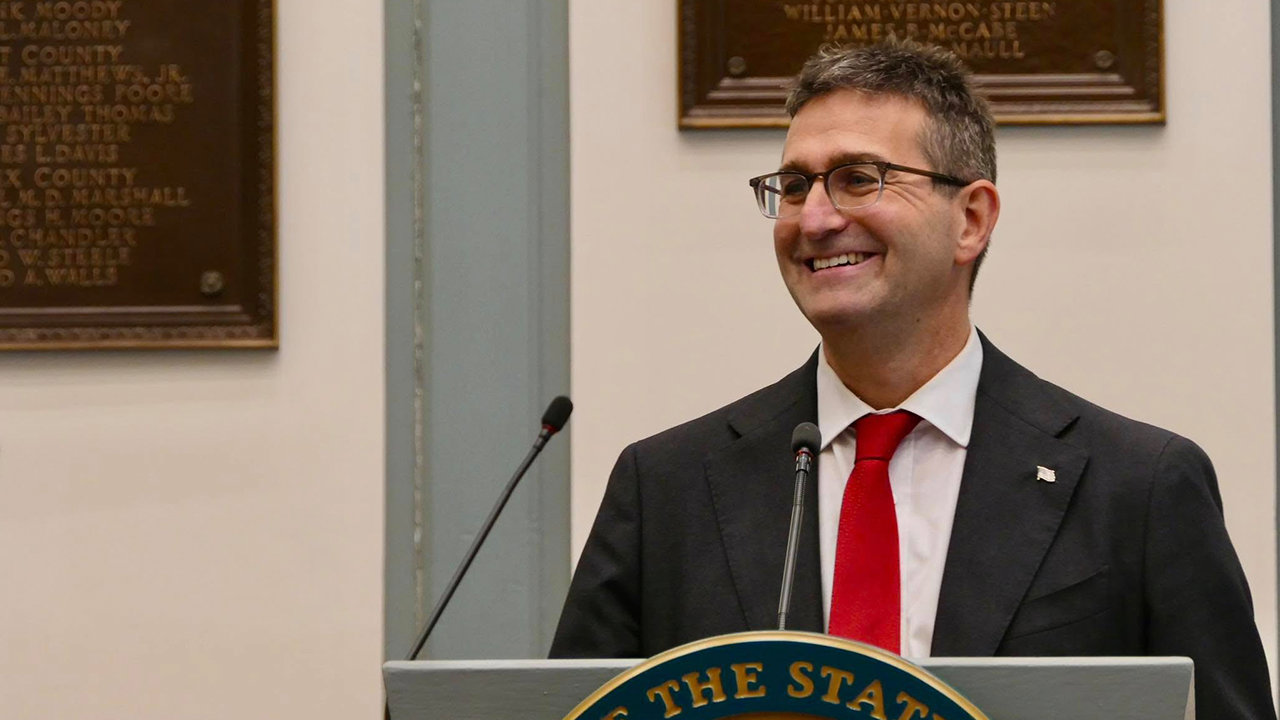Alaska
Bringing fast, reliable broadband to rural Alaska could cost $1.8 billion
When first lady Jill Biden landed in Bethel, Alaska, last week to tout federal funding to improve broadband infrastructure across the state, her security team was already well aware of the region’s cellular and internet connectivity limitations.
“When the Secret Service detail came up here ahead of her, their phones didn’t work,” said Bo Foley, the IT director for the city of Bethel, where only two cellphone carriers operate. “I actually had to somehow drum up 12 cellphones to loan to them.”
Interior Secretary Deb Haaland and Rep. Mary Peltola, who is from Bethel, joined Biden for her historic visit. Biden highlighted federal broadband investments in Indigenous communities around the country, including $386 million in Tribal Broadband Connectivity Program grants going to 21 projects throughout Alaska and $125 million for two broadband infrastructure projects in Southwest Alaska’s Yukon Kuskokwim Delta, where Bethel is located.
Interior Secretary Deb Haaland, center, addresses a large crowd in the Bethel Regional High School gymnasium. From left: first lady Jill Biden, Rep. Mary Peltola, first lady of Alaska Rose Dunleavy and Bethel Native Corporation President and CEO Ana Hoffman.
Katie Basile/High Country News
Bethel, which is home to more than 6,000 people, is a major hub for dozens of other villages in Southwest Alaska. There’s limited high-speed broadband connection here; instead, microwave transmitters deliver internet to some homes, businesses and the school district — for a steep price.
In Alaska’s major cities, fast and reliable internet is available and relatively affordable. But not in many of the state’s small communities. “In the villages, I would say that most homes do not have internet, and the primary access for internet would be through the school,” said Ana Hoffman, the president and CEO of Bethel Native Corporation.
“In the villages, I would say that most homes do not have internet.”
Around 60,000 Alaskans lack broadband access entirely, while 200,000 Alaskans have limited access to broadband that is often too slow to stream videos or connect to a Zoom call — typically failing to go beyond 10Mbps (megabytes per second) download and 1Mbps upload speeds — according to Alaska Tribal Spectrum, a tribally owned nonprofit working to bring high-speed internet and cell reception to rural Alaska.
People lined up for hours in anticipation of appearances by first lady Jill Biden, Interior Secretary Deb Haaland and Rep. Mary Peltola at Bethel Regional High School’s gymnasium.
Katie Basile/High Country News
Alaska’s sheer size and rugged landscape, the vast distances between communities and the state’s small population — only about 730,000 people live here — have made affordable, high-speed broadband delivery an overwhelming and costly task. The state broadband office estimates that it would cost $1.8 billion to deliver broadband to the nearly 200 communities across Alaska that have no access to high-speed internet.
The Lower Kuskokwim School District, which includes Bethel, is the state’s largest rural school district in terms of students served. In 2020, it was estimated that 15% of its students had internet access at home, said Kimberly Hankins, the district superintendent. Bringing fiber-optic internet to the region would mean better connectivity for students and staff and higher-quality remote learning. “With slower internet, we aren’t able to take full advantage of online learning tools and materials, so I look forward to that being more of a reality for us,” Hankins said.
“I really believe this is going to be a game-changer for economic development in rural Alaska.”

A Starlink dish is mounted outside of a home in Bethel, Alaska. Without the option of high-speed fiber internet, many consumers have turned to satellite internet providers.
Katie Basile/High Country News
Faster, more affordable internet in rural Alaska would have other benefits, too. Health-care services like telehealth could improve care in rural regions and save people costly trips to Anchorage, where many of Alaska’s doctors reside. More accessible broadband would also create greater opportunities for economic and workforce development, enabling residents to work from home or start and manage their own businesses. “I really believe this is going to be a game-changer for economic development in rural Alaska,” said Julie Anderson, the chairperson for Alaska Tribal Spectrum’s policy board.
ALASKA TRIBAL SPECTRUM is establishing a program called the Alaska Tribal Network, or ATN. It uses tribal 2.5 GHz spectrum — the specific radio frequencies that wireless signals travel over, which the Federal Communications Commission has reserved for tribal nations — to deliver broadband and cellphone services that cost between $75 and $100 per month. That’s a fraction of the cost many rural Alaskans pay to have internet at home, if it’s even available where they live.
Aleksander Ferguson and Jacob Littlefish connect to the Kuskokwim Consortium Library’s Wi-Fi network to stream YouTube videos. The library offers free internet to the public, but the connection is extremely slow and shared between multiple users.
Katie Basile/High Country News
The program plans to send to villages small receiving towers that would connect to low-Earth orbit satellites, such as Starlink or OneWeb, and deliver internet to the area. If fiber-optic cables are eventually delivered, the communities will be able pivot to that form of internet. “Many of these fiber programs are going to take years to actually come to fruition, and they will be quite expensive, too,” Anderson said. “What I like about this program is that it brings access quickly and affordably, and it maintains competition.”
The towers will also make calling 911 easier for people. “We have a fish camp on the Yukon River, and trying to use a satellite phone on the Yukon in the past has been difficult,” she said.
These new low-Earth orbit satellite internet options are a great fit for rural areas, said Foley, the IT director in Bethel. “It’s not the most perfect product yet,” Foley said. “They don’t compare to a big city’s fiber-optic network, but we’re still at least tenfold better than we have been over the last decade, if not more.” With satellite internet, the city still experiences outages and bandwidth issues, he said, but most outages last only a couple of minutes or so; still, that’s long enough to disrupt video calls.
Biden, Dunleavy, Hoffman and Peltola watch dancers from Ayaprun Elitnaurvik Yup’ik Immersion School perform a blessing song called “Tarvarnauramken.”
Katie Basile/High Country News
“It’s hard to make things better when that type of infrastructure does not exist or will not exist because of the challenges of the environment or location, or things as silly as, ‘Oh, there’s only X amount of people there, and it’s not worth the cost of investment,’” he said.
Hoffman, of Bethel Native Corporation, said the turnout from the Bethel community for Jill Biden’s visit — about 1,000 people — gave her hope. “I think that’s what the infrastructure investment into this region does for us — it means that we’re valued,” she said. “It brings value and others see the value in our presence, our resilience and our perseverance.
“We’re a region full of rich culture, language, spirituality, history, tradition, and we have preserved that over the generations,” Hoffman said. “There’s a lot of harmony in our region, with our relationship with each other, and our relationship with our environment. Others around the world will be able to appreciate the wisdom that is here, because that will be shared once we have the means to do so.”
Bethel, the hub community for 56 Alaska Native villages in Southwest Alaska, has received more than $100 million in federal broadband internet expansion grants.
Katie Basile/High Country News
Victoria Petersen is a freelance journalist living in Anchorage, Alaska. Previously, she was a reporting fellow at The New York Times and a High Country News intern. Follow @vgpetersen
We welcome reader letters. Email High Country News at [email protected] or submit a letter to the editor. See our letters to the editor policy.

Alaska
Hammered by staffing cuts, Alaska’s national parks brace for millions of visitors

Staffing cuts at Alaska’s national parks will save taxpayer dollars. But also likely to limit land management, visitor experience.
Fat Bear Week lets people vote on their favorite chubby bear
Katmai National Park and Preserve will once again allow people to vote on their favorite chubby bear during the Fat Bear Week, starting October 4th.
Staffing cuts at the National Park Service in Alaska will mean less oversight of wolves, whales, weather and fast-melting glaciers this summer. The cuts raise questions about the experiences that 3.3 million visitors will have in a state that’s home to half of all national park lands as the tourism and cruise-ship season ramps up.
But for now, Fat Bear Week remains safe.
President Donald Trump has been slashing employment across the federal government as he makes good on his campaign promises to shrink bureaucracy and save taxpayer dollars. And Interior Secretary Doug Burgum has given Elon Musk’s DOGE team sweeping powers to cut or reallocate spending at the National Park Service in order to prioritize coal, oil and gas development.
Public lands advocates say the cuts imperil important work both on the frontlines and behind the scenes in managing public lands across the country, including in Alaska, which is home to 60% of all land under park service control.
When Trump took office, park service staffing was already 20% lower than in 2010, even though 2024 was the busiest year for park visitation in history, with 332 million visitors.
Now, a first-of-its-kind analysis shows an estimated 60 staffers from the National Park Service’s regional offices in Alaska have departed under the Trump administration via firings, layoffs retirements and buyouts. The cuts represent about 33% of the regional staffing across Alaska, which is home to 54 million acres of park service land.
Overall National Park Service staffing changes are not publicly available, in part because the federal government exempted itself from regulations requiring private employers to disclose job-cut data.
Alex Johnson, the campaign director for the National Parks Conservation Association’s Arctic and Interior Alaska area said he’s worried the cuts will impact the public’s experience.
For many Americans, a visit to Alaska via a cruise remains a one-in-a-lifetime opportunity. Almost 60% of all tourists to Alaska arrive by cruise ship each year, according to state statistics, many of them traveling through Glacier Bay National Park or Kenai Fjords National Park before taking a scenic bus or train ride to Denali National Park.
“There are so many people who dream of coming to Alaska for that national park experience, to see the bears, to see the glaciers, to see the caribou, and essentially at this point the park service doesn’t have the resources or expertise to maintain those landscapes,” Johnson said.
Impact of staffing cuts
The nonprofit NCPA cross-referenced a list of current employees with last year’s directory to help build the list of departed staff. Those approximately 60 departures do not include staffing reductions in the parks themselves, or regional IT or human resources employees whose positions have been centralized to the Interior Department. An Interior Department spokeswoman declined to comment on the staffing reductions.
The regional office departures include wildlife biologists, historians, fire ecologists, tribal liaisons and interpretive specialists. Also gone: the employee responsible for overseeing the service’s automated weather monitoring stations, which are heavily used by pilots across Alaska to plot safe flights.
The tally also does not include the current vacancies in the top spots of six Alaska national parks.
In Alaska, the National Park Service manages an area larger than the entire state of Utah ‒ from renowned Denali National Park and Kenai Fjords National Park to the nation’s largest national park, the Wrangell-St. Elias National Park and Preserve, which alone is nearly the size of West Virginia.
The NCPA estimates that at least 2,5000 park service employees nationwide have left under Trump, in addition to the approximately 1,000 probationary employees who were summarily fired. Congress is currently debating a federal budget plan that could cut up to $1 billion from the National Park Service.
USA TODAY spoke with multiple park service employees in Alaska to confirm the numbers of departures and the impact those job losses are having.
One regional office staffer in Anchorage said they and their colleagues have been backing up all their data and writing down how they do their jobs. That way, said the staffer, who was granted anonymity because they fear for their job, said they want to ensure park service employees some years down the road will be able to understand the previous work. It’s equivalent, the worker said, to writing your own will.
Short-term approach ‘will have an enormous financial impact on the communities’
Trump has promised to hire a more-than-normal number of seasonal employees to help ensure parks remain open for visitors. But current and former park service staffers who spoke with USA TODAY said those seasonal employees won’t be taking on long-term projects like tracking bears or monitoring receding glaciers.
Earlier this month, five former National Park Service directors, along with multiple other former park service leaders, warned that budget cuts risk violating federal law requiring the park service to protect its properties for future generations. Interior Secretary Doug Burgum has ordered current park service leaders to shift staffing to preserve visitor experiences, like keeping open visitor centers and campgrounds.
“…We fear that these messages will put NPS superintendents in a difficult situation when confronted with decisions necessary to protect the resources of the units of the National Park System,” wrote the former leaders, who served under both Democratic and Republic presidents.
“The crippling of our parks and public lands, and the threat to the future of the National Park System, will have an enormous financial impact on the communities that rely on parks and other public lands that support their economies,” they concluded.
One bright spot is Katmai National Park and Preserve, which appears to have largely been spared significant job losses, several park service experts said.
Park officials confirmed to USA TODAY that they will continue running the wildly popular Fat Bear Week competition livestream, which last year drew 10 million viewers.
The livestream webcams at Katmai’s Brooks Falls area show brown bears ‒ the correct name for grizzlies living in coastal areas ‒ as they gorge on spawning salmon each fall in preparation for winter hibernation.
Alaska
A winter interlude hits northern Alaska

ANCHORAGE, AK (KTUU) – A winter storm warning for heavy snow was issued for the Dalton highway Monday as a winter storm impacts the area.
The warning cautions that 7 to 12 inches of snow could hinder travel on the transportation corridor. The warning will remain in place through 4 p.m. Tuesday. Snow is also likely along the northern portion of the state, even though there are no advisories in effect.
Cloud cover will persist over Alaska with scattered showers. Some convective cells fired up in the interior and a few lightning strikes were noted near Paxson.
Drier conditions and sunny breaks are also a part of the forecast this week.
Southeast Alaska continues to see a chance of showers, as does Southcentral to the Interior Tuesday and Wednesday, but overall, a drier stretch of weather is expected for the state.
Download the free Alaska’s News Source Weather App.
Send us your weather photos and videos here!
24/7 Alaska Weather: Get access to live radar, satellite, weather cameras, current conditions, and the latest weather forecast here. Also available through the Alaska’s News Source streaming app available on Apple TV, Roku, and Amazon Fire TV.
Copyright 2025 Alaska’s News Source. All rights reserved.
Alaska
At different points in their notable careers, cartoonist Shel Silverstein and writer Aleksandr Solzhenitsyn explored Alaska

Part of a continuing weekly series on Alaska history by local historian David Reamer. Have a question about Anchorage or Alaska history or an idea for a future article? Go to the form at the bottom of this story.
Two weeks ago, this column covered the path of hard-boiled crime writer Dashiell Hammett — a sickly, famous, and nearing 50-year-old member of the Communist Party — as he went from Hollywood celebrity to Army enlistment to his posting in remote Adak. Last week, this column covered the forced several-month sojourn of author and religion inventor L. Ron Hubbard in Ketchikan. Of course, Hammett and Hubbard are far from the only celebrated authors with ties or significant visits to Alaska. From Jack London to freshly minted Pulitzer winner Tessa Hulls, Alaska has lured and inspired numerous writers. This time, let’s look at the two disparate characters, cartoonist Shel Silverstein and Soviet exile Aleksandr Solzhenitsyn.
In 1960, Sheldon “Shel” Silverstein (1930-1999) was not quite the beloved author and illustrator he would become. The Korean War veteran grew up drawing whenever he could. During his Army tenure, he published a series of cartoons for Stars and Stripes, a transformative experience. In a 1968 interview, he stated, “The Army was the best thing for me as far as my art work went because I didn’t have to worry about coming through any commercial way. I knew I wasn’t going to sell or I wasn’t going to appear anywhere. I could draw what the hell I wanted to draw, so I did. And I ate three meals a day, which is lucky because usually your meals depend on how well your stuff sells.”
After leaving the service, he published a couple of compilations of old cartoons and went to work for Playboy in 1957. There, he began to expand his fame, most notably with a travelogue series called “Shel Silverstein Visits.” Basically, Silverstein was forced to circle the globe and create some cartoons about the experience, shuffling from the likes of Paris to Moscow to Italy. In the summer of 1960, he took off for Alaska and Hawaii, a chance to document life in the new states.
He arrived in Anchorage in mid-July 1960. As would happen elsewhere in Alaska, the Daily News warned locals that he appeared like a “Beatnik” from the neck up but was in fact a gentleman, as indicated by his suit and tie. Silverstein famously went with the shaved head, bearded combination, which is, of course, a well-evidenced signifier of intelligence and manliness in writers. The Nome Nugget likewise warned its readers that the “beatnik,” “bearded young man who is about town with a sketch book” was, in fact, nothing to fear, just an itinerant Playboy representative.
There was something of a nationwide panic then about supposed counterculture youths undermining American society. From the 1950s to the late 1960s, blame shifted from juvenile delinquents to beatniks to hippies as the elders learned new words. To be clear, it is evident that no one in 1960 Alaska had the clearest idea of what exactly a beatnik looked like. Silverstein told the Daily News, “Why, in some places if you don’t wear a tie, you’re a beatnik.”
While in town, he was a judge for the Miss Alaska contest won by June Bowdish. Conversation naturally arrived at the nature of Playmates, and the Daily News asked him how many Alaskans would be worthy. He replied, “We haven’t seen one yet,” a review that sounded worse after he revealed his thoughts on Playmates. “It doesn’t take a mental giant to be a Playmate. We just want good-looking dolls. We don’t care if they have brains.”
From Anchorage, he flew around the state, including stops at Fairbanks, Nome, Kotzebue and Barrow, now Utqiaġvik. With more experience in Alaska, he offered a litany of takes to the Fairbanks Daily News-Miner. Alaska Natives were the “warmest, most sincere people I’ve met.” The sandwiches were “ridiculously skimpy and prohibitively expensive.” On liquor, “It’s absolutely fantastic the amount of liquor consumed in Alaska.” Overall: “If I ever was unhappily married, this would sure be the place to bring my wife on vacation.” Silverstein notably never married.

The resultant piece was published in the May 1961 Playboy. Other features in that issue of the urbane men’s magazine include a deeper dive into private airplane ownership, fiction and satire from the most respected authors of the day, an analysis of gambling systems, and something called “The Girls of Sweden,” apparently an exposé on the lack of clothing in the Scandinavian nation. Occasional actress Susan Kell was the centerfold.
Material from the interior may be too mature for some readers, but suffice to say, Silverstein was shocked by the difference between the real Alaska and the version portrayed in television and movies. The introduction notes, “There’s still gold in them thar hills, he discovered, but more panning is done by north country film critics than by adventuresome treasure seekers. Putting the lie to a crop of Hollywood fiction, Shel found nary an igloo, but did find an array of Eskimos weary of flicks about intrigue in the ice domes.” The cartoonist himself said, “Shooting a moose out of season is considered a worse offense than shooting your wife.”
As shown by his cartoons, Silverstein expected a wild country of subsistence hunters, trappers, and assorted wild men and women. Instead, he found pinball machines, electricity and overpriced food. A cook tells him in one cartoon, “OK, OK, so the hamburger was tough. What do you expect for a lousy $3.75, anyway?” After accounting for inflation, $3.75 in 1960 is about $40 in 2025 money.
Silverstein also worried about how the layers of garments affected relationships. In another cartoon, he tells a woman, “Sure, it would be fun, but I’d have to take off my outer parka, then my fur parka, and then I’d have to take off my sealskin vest, and then my sweaters, and then I’d have to take off my flannels, and by that time I’d be too tired.”
This Alaska trip occurred four years before “The Giving Tree” was published, and 21 years before “A Light in the Attic.” Playboy collected the “Shel Silverstein Visits” articles, including the piece on Alaska, in the 2007 book, “Silverstein Around the World.”
To put it simply, the Russian author Aleksandr Solzhenitsyn (1918-2008) had a different perspective on the world from Silverstein. Solzhenitsyn was an artillery officer in the Red Army during World War II. He was an intellectual sort, deeply scarred by the wartime horrors he witnessed and increasingly critical of Soviet leadership, particularly Joseph Stalin. Unfortunately, he put those criticisms to paper, leading to his arrest in February 1945 and a sentence of eight years in the labor camps, the back-breaking, soul-crushing gulags. The person he might have become was erased, ground into nothing and reshaped by the dehumanizing experience. Yet, the morbid twist is that his subsequent fame and literary relevance were built, in large part, upon those dire years.
Stalin died in 1953. In the years immediately following, the concentrated powers that be in the Soviet Union strove to undermine the cult of personality surrounding the former General Secretary. This de-Stalinization included the previously unthinkable, the publishing of material critical of him and his oppressive regime. And so, under the express permission of Soviet Premier Nikita Khrushchev, Solzhenitsyn’s first novel was released in 1962.
That book, “One Day in the Life of Ivan Denisovich,” is a dire, unsettling account of life in a labor camp. Indeed, its title is literal, following the eponymous main character through a day, seeing the stark limits of his agency, seeking only to ensure the arrival of the next minute, grabbing at the smallest increments of success. At the end, the hero gained an extra bowl of mush and a metal scrap that would minutely ease his labor, bricklaying in freezing conditions. It was his best experience in recent memory; “Nothing has spoiled the day and it had been almost happy.”
The gulags were a central aspect of Stalin’s long rule, one of several heavy sticks that ensured obedience. Petty criminals, real and imagined dissidents, ethnic minorities, political rivals, and intellectuals were dispatched to these prison labor camps. Millions passed through the camps. “One Day in the Life of Ivan Denisovich” was the first time such an open account of Stalinist gulags was published in the Soviet Union, and it became the way many Westerners first learned of the camps’ existence. In 1970, Solzhenitsyn was awarded the Nobel Prize in literature. In his acceptance speech, he stated, “During all the years until 1961, not only was I convinced I should never see a single line of mine in print in my lifetime, but, also, I scarcely dared allow any of my close acquaintances to read anything I had written because I feared this would become known.”
But times changed in Russia. Khrushchev was toppled in 1964, and his more open approach to Soviet history was abandoned. Solzhenitsyn’s subsequent works were published abroad. And that Nobel speech was mailed in. He dared not leave the country, afraid he would not be allowed back in. In 1973, he published “The Gulag Archipelago,” a three-volume nonfiction series on the gulag. The next year, he was arrested and deported, sent to live in West Germany.

On May 27, 1975, Solzhenitsyn landed at Ketchikan and stepped onto American soil for the first time. He had been travelling in Canada, but his arrival in the United States came without fanfare and little notice. From Ketchikan, he and his wife, Natalia Svetlova, rode the ferry to Juneau, where they checked into the Baranof Hotel. Father Cyril Bulashevich, minister at Juneau’s St. Nicholas Russian Orthodox Church, acted as guide.
Gov. Jay Hammond hosted a small dinner to honor the author. Some press were there, but to their explicit irritation, Solzhenitsyn asked not to be quoted and granted no interviews. As far as he was concerned, this was a “private vacation.” In the gap of actual facts, rumors spread that he was looking to settle in Alaska or perhaps tour the Russian Orthodox churches here.
To be frank, Solzhenitsyn was deeply critical of many, many things about and all over the world, including the inquisitive nature of the Western press. In his 1978 commencement speech at Harvard University, he denounced “the shameless intrusion into the privacy of well-known people according to the slogan: ‘Everyone is entitled to know everything.’ But this is a false slogan of a false era; far greater in value is the forfeited right of people not to know, not to have their divine souls stuffed with gossip, nonsense, vain talk. A person who works and leads a meaningful life has no need for this excessive and burdening flow of information.”
Back in 1975, Solzhenitsyn unsurprisingly struggled with English words. In the most entertaining anecdote from his short stay in Alaska, he was having trouble pronouncing “process” during the Hammond party. He and his wife disagreed on how to say it, and he tossed her their little travel copy of a Russian-English dictionary. The great writer assumed the text would verify his version. Instead, she was right.
They visited Sitka and, on June 1, 1975, left Alaska. In keeping with his private nature, they did not announce their destination or further travel plans. Under perestroika and glasnost, the cultural and political thaws promoted by the last Soviet leader, Mikhail Gorbachev, many of Solzhenitsyn’s books were legally published in the country for the first time. In 1990, his citizenship was restored. After the collapse of the Soviet Union, he finally returned to his homeland in 1994, where he lived out the rest of his days in a home on the Moscow outskirts.
True to form, he complained that the country had gone to hell, that there was “too much freedom” and crime. He declared, “It is Gorbachev’s glasnost that has ruined everything.” Gorbachev responded, “Well, without glasnost, he would still be living in exile in Vermont chopping wood.”
Silverstein was 29 when he visited Alaska, still in his physical prime, if before his eventual fame. Solzhenitsyn was a worn 56, lines carved deeply upon his face, the ravages of imprisonment, disease, and fear readily apparent in his movements. Two authors so widely different, yet they both found a reason to visit Alaska.
-

 Technology1 week ago
Technology1 week agoMexico is suing Google over how it’s labeling the Gulf of Mexico
-

 Politics1 week ago
Politics1 week agoDHS says Massachusetts city council member 'incited chaos' as ICE arrested 'violent criminal alien'
-

 Education1 week ago
Education1 week agoA Professor’s Final Gift to Her Students: Her Life Savings
-

 Education1 week ago
Education1 week agoVideo: Tufts Student Speaks Publicly After Release From Immigration Detention
-

 Politics1 week ago
Politics1 week agoPresident Trump takes on 'Big Pharma' by signing executive order to lower drug prices
-

 Culture1 week ago
Culture1 week agoTest Yourself on Memorable Lines From Popular Novels
-

 News1 week ago
News1 week agoAs Harvard Battles Trump, Its President Will Take a 25% Pay Cut
-

 News1 week ago
News1 week agoWhy Trump Suddenly Declared Victory Over the Houthi Militia















